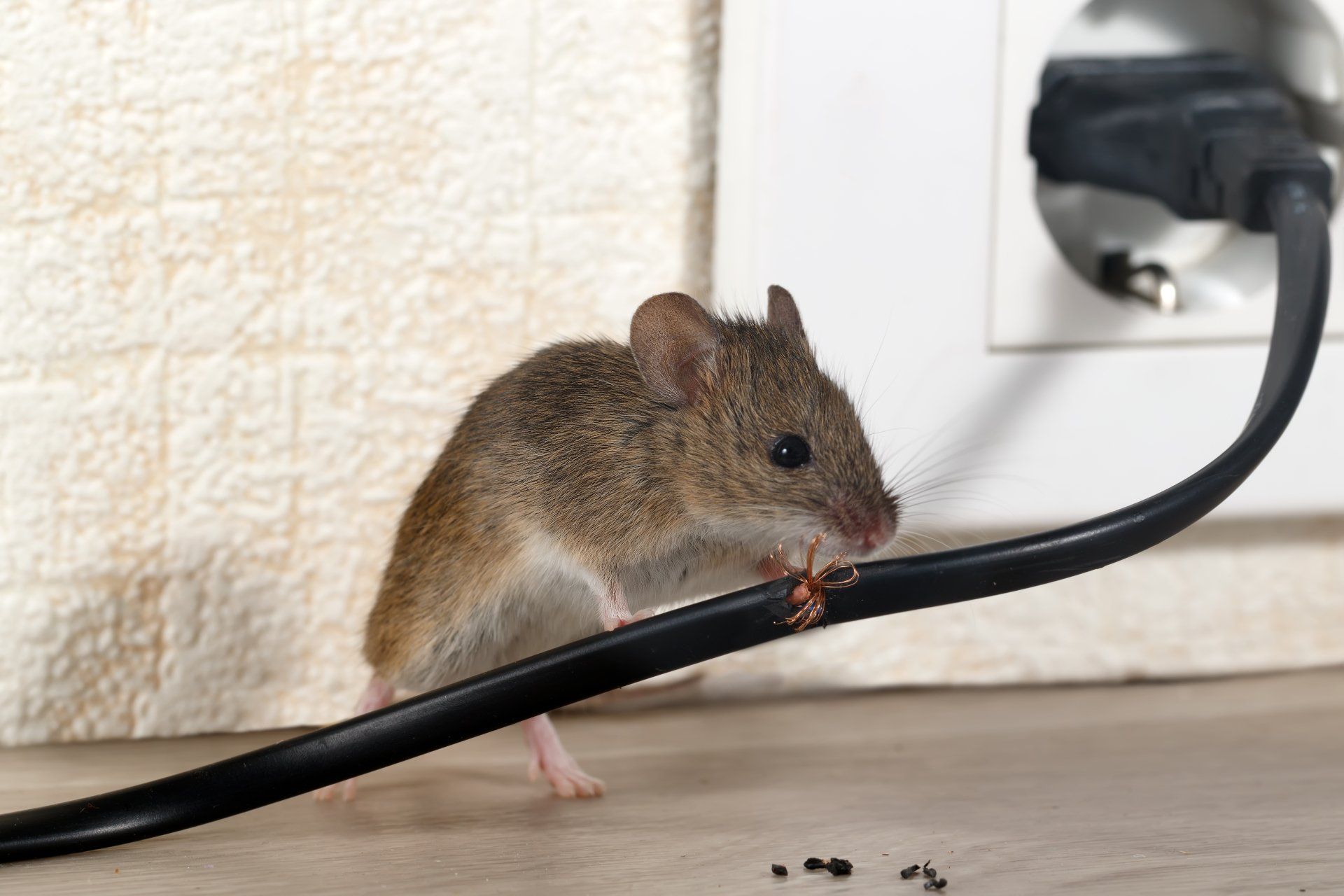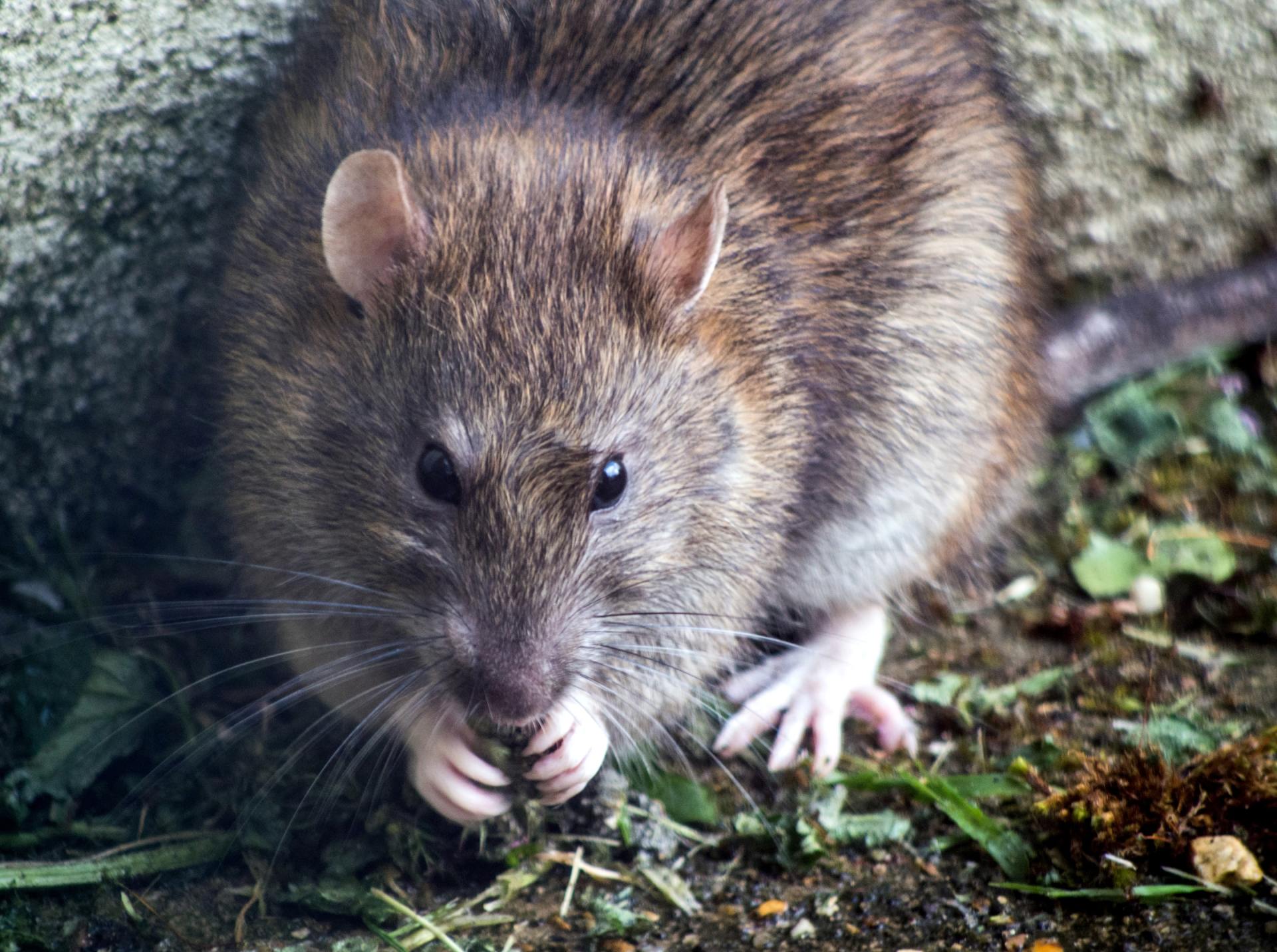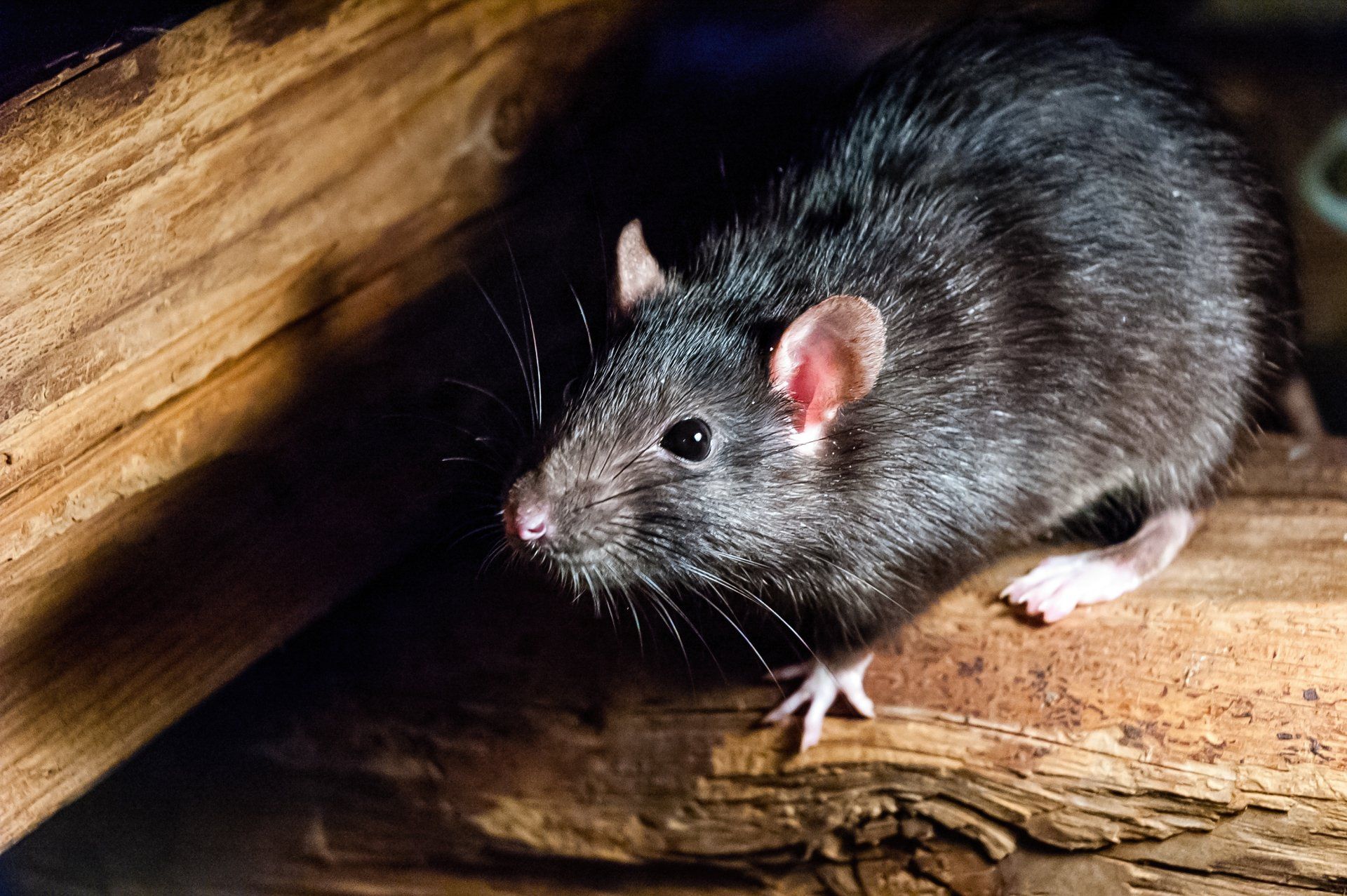The House Mouse (Mus musculus)
Mice, rats, and other rodents can cause serious damage to your home or business. They can gnaw through wires and insulation, live in attics and wall voids, and transmit dangerous diseases. Rodents are not simply a nuisance, they are a serious health danger that will not go away if ignored. Rodent infestations tense to get worse over time, so immediate treatment is advised.
Biology and Habits:
House mice usually are dusky gray to light brown. Their belly is light colored (gray or cream) but never white. Adult house mice have rather large ears when compared to the size of their bodies. An adult house mouse may have a combined head and body length of just over 3 inches. The tails is dark, scaly, and usually shorter than the length of the head and body combined. Adult droppings are 1/8 to % inch long. House mouse droppings are rod shape and have pointed ends.
House mice eat many of the same food as humans, including cereal grains, seeds, fruits, and vegetables. Cereals are the preferred food. Because they nibble, they may feed as often as 15 to 20 times each day. These mice consume a small amount of food each time at each feeding site. Mice can survive on very small amounts of water. They usually get all moisture they need from their food but will drink water if available.
House mice are inquisitive. They are not suspicious of new foods and sample them eagerly. They also investigate any new object in their territory.
Each male mouse stakes out a territory around his nest. He may not travel more than 10 feet from his nest if food is close by. The nest is made from almost any soft material, which is chewed into small bits to make a soft bed. Females are capable of breeding three to six weeks after giving birth. The produce an average of six litters each year. There usually are six to eight young in a litter. A house mouse reaches sexual maturity in 35 days.
Treatment/Control:
Initial clean-out plus follow-up treatments as needed. Some problems just involve 1 -2 follow-up treatments. Some problems requires ongoing maintenance. Exclusion service beyond steel wool to small holes is extra. We do Rat Control also.



